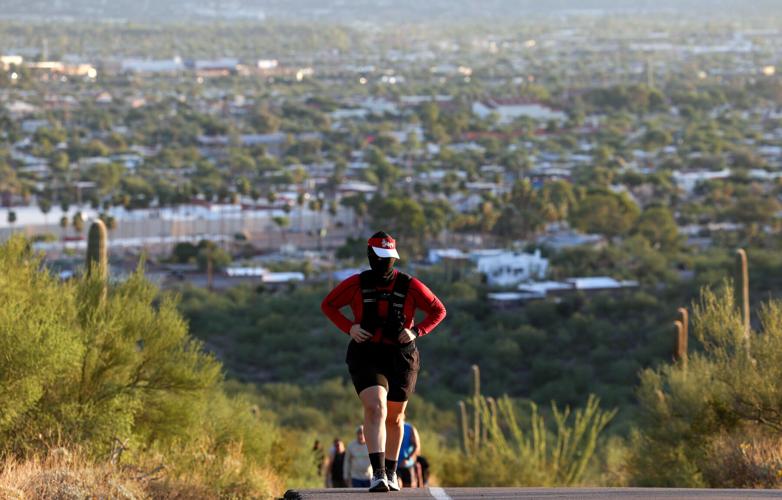Tumamoc Hill’s Desert Laboratory, run by the Arizona Institute for Resilience, is welcoming a new faculty director.
Elise Gornish, an associate professor and extension specialist in the School of Natural Resources and the Environment at the University of Arizona, has been tasked with running the laboratory.
“I’m so excited by the incredible opportunity to lead the Desert Laboratory,” Gornish said in a statement. “The Laboratory retains long term archives of ecological, cultural, and anthropological data and artifacts, a treasure trove of resources for researchers in all disciplines.”

Elise Gornish is the new director of Tumamoc Hill’s Desert Laboratory, which is run by the Arizona Institute for Resilience. She will work to facilitate research and educational collaborations at the UA with those interested in exploring the nature and land on the preserve.
The director of the Desert Laboratory is responsible for facilitating research and educational collaborations at the UA with those interested in exploring the nature and land of Tumamoc Hill, which is on the west side of Tucson.
Besides that, Gornish will also work to “increase engagement with Tumamoc Hill recreators, the Tucson public, Native nations and local community organizations,” according to a UA statement.
“I recognize and cherish Tumamoc Hill’s sacred significance to the Tohono O’odham Nation and other Native Nations,” Gornish said. “I’m committed to partnering with all individuals and groups invested in protecting the inclusive future of this special place.”
The appointment comes after the lab’s previous director, Ben Wilder, resigned from his position in 2022, after what he called “an impasse” with university leadership over the vision for the future of the 860-acre ecological preserve.
Wilder’s six-year leadership term saw improvements to the laboratory facility, its programs and public access to the hill, which is a popular Tucson hiking destination. He helped develop an app for the public to use to tour the hill and restored the road on Tumamoc for easier hiking conditions. Wilder also oversaw renovation of the site’s greenhouse, development of its new resilience garden and completion of deferred maintenance projects, some of which dated back more than 100 years to when the Carnegie Institution operated the Desert Laboratory.
After his departure, the university placed Clark Reddin, the laboratory’s director of operations, in charge of all operational activities on Tumamoc Hill.
Gornish’s academic research focuses on “restoration and management strategies of dryland vegetation that mitigate effects of climate change,” according to the university.
Those at the Arizona Institute for Resilience, which oversees the laboratory and aims to use science to find community-oriented solutions, are optimistic about Gornish’s appointment.
“I am delighted that Elise will be bringing her incredible energy and experience to our team,” said Sharon Collinge, director of institute. “Elise’s background in natural resources, her extensive practical experience in science education, and her leadership in coalescing partnerships for research, education, and resilience solutions make her the perfect fit for this important position.”






